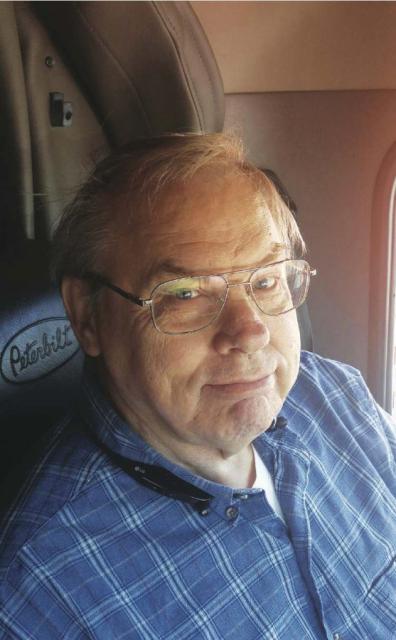DREAMS OF A TWO-WHEELER

Parked at a small truckstop in Le Mars, Iowa, I was lounging in the driver’s seat, leafing through a magazine. Something caught my eye in the driver’s mirror, and I noticed a strange but wonderful sight. A young boy about eight years of age slowly pedaling his bicycle around the truck, lightly dragging one hand on the siderails of my stepdeck.
Clearly lost in thought, he circled the entire rig, completely unaware that his dreams were being played out before my eyes. He never saw me, and never took his eyes—or hand—off the truck as he rode around the whole rig twice. Then he just casually turned and rode away.
I was that age once, in 1959, riding my own bike near the Minneapolis St. Paul International Airport. Known then as World Chamberlain Field, it was home to Northwest Airlines and Naval Air Station Minneapolis. There was no security back then, and no cameras, sensors, or canine patrols.
Spying a long and narrow asphalt roadway, I noticed a small chain stretched across the pavement, just a few inches off the ground.
Not once did it occur to me that I was trespassing. What did enter my mind was the road less traveled, a place I longed to be for many years after this rural discovery. So off I rode, down this lane of undiscovered promise.
The next morning, in Le Mars, Iowa, I was having breakfast in the truckstop café when I saw the boy again. Again, he was slowly riding his bike around my entire rig. Not wide-eyed or furtive, his movements were instead casual and deliberate.
Yet there was the unmistakable glint in his eyes, as if he were suddenly confronted with images seen previously only in books or magazines. He wasn’t just fascinated by these trucks, but one could see his mind cataloging the connections, the tires, the loads, and the lights.
As I rode my bike that summer day near the Minneapolis airport, I could see just scrub brush, asphalt, and a building in the distance. Then suddenly I saw the most magnificent thing standing stately in the sunlight.
There on the ramp stood a gleaming silver fighter jet, her canopy propped open, a ladder leaning against the fuselage. This could only be an invitation, and I scrambled up the ladder to see my first real fighter jet cockpit.
Breakfast over, at the Le Mars truck stop, I headed out to see if the young man would like to meet. Unfortunately, he was gone, off to explore a new lane of undiscovered promise. So, with just a hint of sadness, I did my own tour around the truck, starting my day with a pre-trip inspection.
As I prepared for another day of battle with four-wheelers, texters, drunks, and road ragers, I couldn’t help thinking about that long-ago day in 1959. It was a memorable experience, and for all the wrong reasons.
Standing at the top of a ladder, peering down into the cockpit of a real fighter jet, I never heard the convoy of heavily armed military policemen surrounded the jet. When I did see them, I made a lame joke about flight reservations. They were not amused.
Neither were my parents, who had to pick me up at the Provost Marshall’s office, and listen to a very irate base commander ask about roadway chains. And despite my good looks and gracious charms, I’ve never been invited back. I know. Go figure!
You are supposed to change the world. Cynthia Tobias, 2019
You can reach Roger at [email protected]
